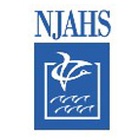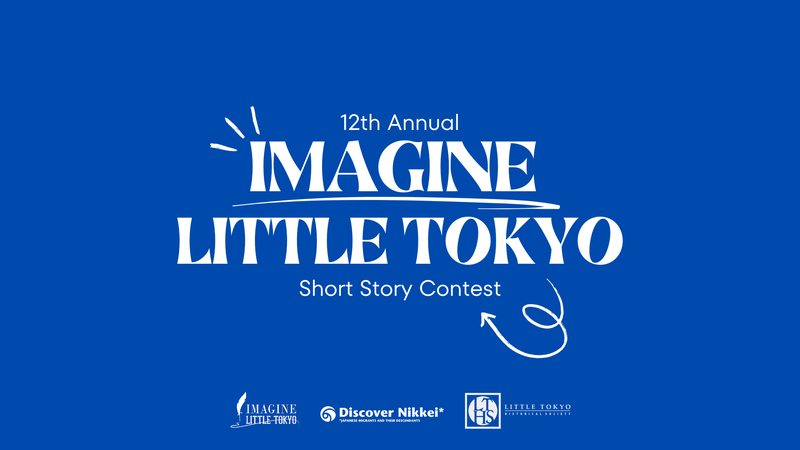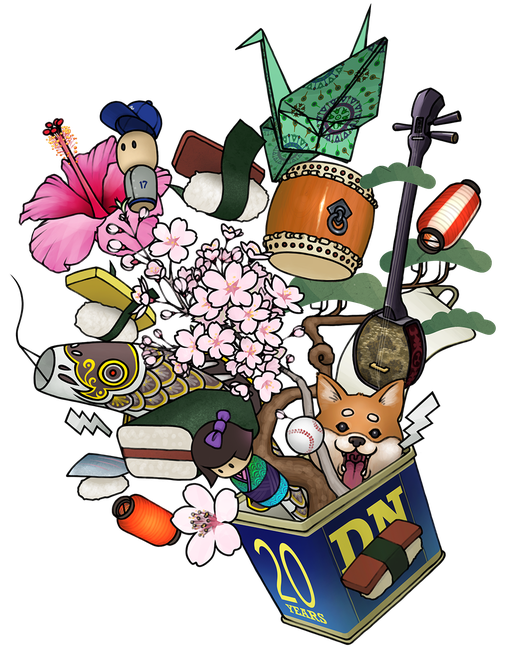In 2002, I had the good fortune to interview Tom Oishi, a Nisei flower-grower from Richmond, California, for an oral history project. Tom’s rascally sense of humor and flashbulb memory made our conversations about his hometown, the nursery business, his family and their lives within the Japanese American community extremely rich and great fun. He vividly recounted the day he left work as a welder at the Kaiser Shipyards and was taken, along with the rest of Richmond’s Japanese American community, to Tanforan Assembly Center – the first step in a years’ long journey of forced removal and incarceration during WWII.’
During our second meeting, we visited the Oishi nursery a few blocks north of Tom’s current home. We saw his family’s house, which had served as the first Japanese language school established by local Issei for their children (a purpose-built structure one block away replaced the initial school in the early 1930s). Tom pointed out the spot where the family’s furo (Japanese bath) had stood, and recalled the labor his siblings performed hauling wood for the fire that heated family bathwater.
He proudly identified the nursery’s old boiler room and described the architectural drawings he had made for it with skills gained in a drafting class at Richmond High School that were speedily approved by City officials for construction. These place-based memories, though rich in detail and profoundly moving, did not prepare me for the emotional and aesthetic jolt of walking into one of the dozen or so greenhouses on the property. Many of these structures, made of glass pane and whitewashed wood, had been hand built by Tom, his brothers and their father. Their generous size and abundant illumination, along with the sweet-spicy smell of growing carnations, made me feel I was walking into another world. Even more ethereal was the grid of string floated across the length and width of the room to support the spindly carnation stalks as they reached for the sunlight gathered within the greenhouse.
As I learned from Tom that day, the meticulous, laborious task of knotting cotton string into this three-dimensional structure had been performed by generations of Oishis over more than eighty years. The fragility and tenacity of that string grid became a symbol for me of the grace, strength and endurance that any people, but in this case Richmond’s Japanese Americans, can call up under duress.
Tom Oishi’s powerful memories of Richmond’s Japanese American flower growing community led me to apply for funding from the California Civil Liberties Public Education Program to document the impact of WWII on Richmond’s Japanese American and Italian American residents with scholars Lynne Horiuchi and Lawrence DiStasi. As the essays and videotaped oral histories in our 2004 project Not At Home on the Home Front demonstrate, Japanese Americans and Italian Americans were an integral part of Richmond long before the attack on Pearl Harbor changed their fortunes through a wartime program of forced removal from their homes, businesses and tightly-knit communities. Although not large enough to support the range of local services and organizations that developed in Nihonmachis (Japantowns), Richmond’s cluster of Japanese American nurseries is historically significant as a Nikkei community centered around an industry that was important to this ethnic group and that survived all the way from the initial wave of immigration until the turn of the 21st century.
Because a large number of local nursery owners had purchased their land before the passage of the 1913 Alien Land Law, which forbade property ownership to most Japanese as “aliens ineligible for citizenship,” Richmond’s Japanese community was a remarkably stable and long-lived ethnic enclave. Despite forced removal from homes and businesses during WWII, many of Richmond’s Japanese American nursery owners returned to their neighborhood and revived their businesses. Re-establishing the nurseries took remarkable effort and grinding labor; some families had to literally pick up the pieces as shattered panes of greenhouse glass littered every square foot of their property. A sizable number of Richmond’s nurseries were revived in the years just after the war – the Adachis, Fukushimas, Fujiis, Hondas, Maidas, Mayedas, Nabetas, Ninomiyas, Oishis, Oshimas, Sakais and Sugiharas all returned from camp to reclaim their livelihoods and community in Richmond. They were aided in great part by the tradition of cooperation established at the community’s outset.
Ironically, some of the nurseries were displaced in just a few short years as the development of the I-80 freeway cut through the properties in 1948. By the mid-1960s, records indicate that of the original group of nurseries centered on Wall Avenue only the Adachi, Maida, Oishi, Oshima and Sakai families still survived. Of these, only the Oishi and Sakai nurseries operated into the 21st century.
Not at Home on the Home Front grew out of my own immersion in the stories of wartime Richmond that began in 1997 when I was hired by the Richmond Community Redevelopment Agency to direct the Rosie the Riveter Memorial project. As I worked with the Memorial design team, particularly with artist Susan Schwartzenberg, and city staff and community members, it became abundantly clear that, in addition to gender, there were many other fascinating and important dimensions to Richmond’s home front history. Local streets, structures, community organizations and personal memories held the complex story Richmond had to tell of migration, housing, childcare and health care, labor unions and integrated workforces on the home front.
This broadened exploration led to an initial study by the City and the National Park Service (NPS) and, ultimately, to the establishment of Rosie the Riveter/WWII Home Front National Historical Park in Richmond that would be the premiere site for interpreting the diverse social history of America’s home front.
World War II probably had a more direct impact on people’s daily lives across the United States than any other conflict. For most Americans, those changes were positive in both the short- and long-term; workers’ wages climbed from Depression depths, and wartime breaches of discriminatory barriers were translated into sustained achievements through ongoing civil rights organizing. Because of the dramatic story of Richmond’s four Kaiser Shipyards -- the largest and most productive shipbuilding facility the United States has ever seen – and the consequent flood of workers who transformed Richmond from a small city to a twenty-four-hour boomtown, the community’s home front era has been the subject of numerous studies. While some scholars have ventured into the tense territory of racism and civil rights in exploring the social changes that followed wartime African American migrants to Richmond, none had looked closely at the particularly painful chapter as it unfolded for Nikkei in Richmond during the “good war.”
It was apparent that a national park about the WWII home front in a town whose residents had been forcibly relocated could not ignore this subject, yet the basic research for these stories still needed to be conducted. As Not at Home on the Home Front neared completion, some of the information unearthed by our project gave shape to the public record of Richmond’s home front story. The Bay Trail Marker project, undertaken by a creative team including former Nikkei Heritage editor, Chiori Santiago, was sponsored by the Richmond Community Redevelopment Agency for the City of Richmond and the National Park Service to interpret Richmond’s WWII history at the city’s waterfront. The marker designs incorporated oral histories, historic photographs, and narrative to sketch several broad themes of home front Richmond, from struggles for civil rights to the deluge of wartime migrants to the social legacy of the home front.
One of these markers along Richmond’s Bay Trail focuses on the experiences of Japanese Americans and Italian Americans during the war and was installed in Fall 2004 at Shimada Park, which was named after Richmond’s Japanese sister city. During the national park’s early stages, I had worked to ensure that this waterfront park, built on the former site of Kaiser Shipyard No. 2, was included in the National Historical Park’s original boundaries. I found it fascinating that, just fifteen years after Japan had been deemed an enemy, Richmond and Shimada had established a relationship to promote “mutual understanding between citizens of free countries,” as their Sister City charter declared.
In 2003, as our nation again engaged in war, the Marker team believed that the question of how we define enemies and allies, and how those definitions shift over time, was an especially compelling topic for dialogue among Richmond’s residents and visitors. By 2006, the Sakai and Oishi families were negotiating sale of their nurseries to the Richmond Community
Redevelopment Agency, which planned to partner with nonprofit and for-profit housing developers to transform the site. Knowing of the nurseries’ historic significance, the developers were required by state law to commission a historic resource study of the project area, which I conducted with architectural historians Ward Hill and Woodruff Minor. This project gave us the opportunity to conduct additional interviews and to create a digital archive of indexed photographs from family albums that will be of great use to future researchers. The research for this study offered detailed documentation of the properties’ dozens of historic structures, including greenhouses, family homes, packing sheds, and worker housing. The California Japanese American Community Leadership Council’s Preserving California’s Japantowns project, through research conducted by myself and Jill Shiraki, revealed that these nurseries are a rare legacy of an important chapter in Nikkei history and in the heritage of our state. Our surveys of Nikkei communities across California did not identify any other sites that hold this depth and breadth of historic connection to the Japanese American flower-growing industry.
As this issue of Nikkei Heritage goes to press, City of Richmond planning staff is reevaluating their development approach to the nursery site in order to accommodate new restrictions placed by the Bay Area Air Quality Management District, which require a buffer between the I-80 freeway and the proposed housing. This turn of events opens a door for preserving a portion of the historic site that would allow the nursery legacy to be honored in its original place.
In June 2008, City and National Park Service staff, project developers, community members and representatives of the National Trust for Historic Preservation and the California Office of Historic Preservation met to discuss possibilities for preservation and reuse of portions of the Sakai and Oishi nurseries. As plans for development of the historic site evolve, members of the Contra Costa JACL, National Park Service staff and other community representatives are discussing possibilities for weaving Richmond’s Nikkei story into Rosie the Riveter/WWII Home Front National Historical Park.
Earlier this year, over fifty Nikkei from the Sakura Kai Senior Center participated in a special tour of Rosie the Riveter/WWII Home Front National Historical Park. This journey included historic sites featured on the park’s standard community bus tours as well as several places important to Japanese American history in Richmond. After visiting the historic shipyards and war housing, we drove past the former locations of a Japanese-owned fish market, a grocery store, and a shoe repair shop, and stopped at the Sakai and Oishi nurseries. Bus riders heard stories from nursery family members and from Nisei who recalled living in Richmond defense housing projects during post-war resettlement. Their memories made the urban landscape come to life and reinforced the power of personal stories and the urgency of capturing them for future generations.
* This article was originally published in Nikkei Heritage Vol. XIX, Number 3 (Fall 2008), a journal of the National Japanese American Historical Society.
© 2008 National Japanese American Historical Society









